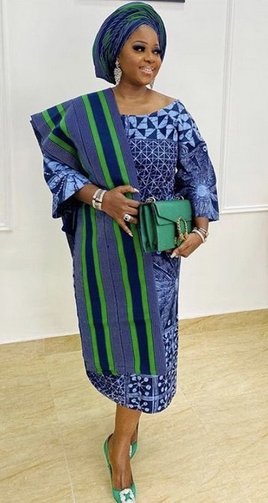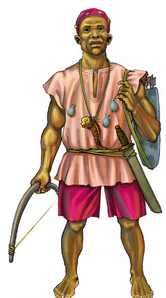
support@yorubalibrary.com
+2348073529208, 07038599574

Yoruba traditional clothing is renowned for its elegance and cultural significance. Among the various attire, the Buba stands out as a staple garment for both men and women. This article explores the origins, styles, and cultural importance of the Buba in Yoruba society.
Historical Background
The Buba is a loose-fitting top that has been part of Yoruba traditional attire for centuries. It is typically paired with other garments such as the Iro (wrapper), Sokoto (trousers), and Gele (head tie) for women. The Buba has evolved over time, maintaining its relevance and popularity within Yoruba culture.
Types of Buba
Traditional Buba
The traditional Buba is made from local fabrics such as Aso-Oke, Adire, and Ankara. These materials are known for their durability and vibrant patterns. The traditional Buba is often worn during cultural ceremonies, festivals, and important social gatherings.
Modern Buba
In contemporary times, the Buba has been adapted to include modern fabrics like lace and silk. These modern versions retain the classic design but offer a more diverse range of styles and patterns. They are popular for weddings, parties, and other formal events.
Characteristics of the Buba
Design and Structure
The Buba is characterized by its loose fit, long sleeves, and round neckline. It typically reaches just below the hips, providing comfort and ease of movement. The simplicity of its design allows for versatility and ease of wear.
Fabrics and Patterns
The choice of fabric and patterns for the Buba varies according to the occasion and personal preference. Traditional fabrics like Aso-Oke and Adire feature intricate patterns and vibrant colors, while modern fabrics offer a wider array of textures and designs.
Cultural Significance
Symbol of Identity
Wearing the Buba is a way for the Yoruba people to express their cultural identity and heritage. It symbolizes pride in one's roots and a connection to Yoruba traditions. The Buba is often passed down through generations, becoming a cherished family heirloom.
Representation in Ceremonies
The Buba plays a significant role in Yoruba ceremonies such as weddings, naming ceremonies, and cultural festivals. It is often adorned with elaborate embroidery and accessories, enhancing its aesthetic appeal and cultural value.
Styling the Buba
For Women
Women typically pair the Buba with an Iro, a large piece of fabric wrapped around the waist, and a Gele, an intricately tied head wrap. Accessories such as beaded necklaces, bangles, and earrings complete the ensemble, adding elegance and sophistication.
For Men
Men wear the Buba with Sokoto, loose-fitting trousers, and sometimes a fila, a traditional Yoruba cap. The combination creates a distinguished look that is both traditional and stylish. Men often accessorize with wristwatches and chains to enhance their attire.
Modern Adaptations
Fashion Trends
The Buba has found its way into modern fashion, with designers incorporating contemporary elements while preserving its traditional essence. Fashion shows and events often feature the Buba, showcasing its versatility and timeless appeal.
Everyday Wear
While the Buba is traditionally worn for special occasions, it has also become a part of everyday wear. Its comfort and style make it a popular choice for casual outings and informal gatherings, bridging the gap between tradition and modernity.
Conclusion
The Buba is more than just a piece of clothing; it is a symbol of Yoruba culture and tradition. Its enduring popularity and adaptability highlight its significance in Yoruba society. Whether worn traditionally or with a modern twist, the Buba continues to be a cherished garment that embodies the rich cultural heritage of the Yoruba people.

Learn about the Yoruba concept of Ìwà Pẹ̀lẹ́ (good…

Learn special praises for Divine Being and Creator…